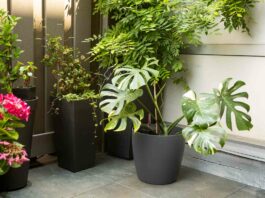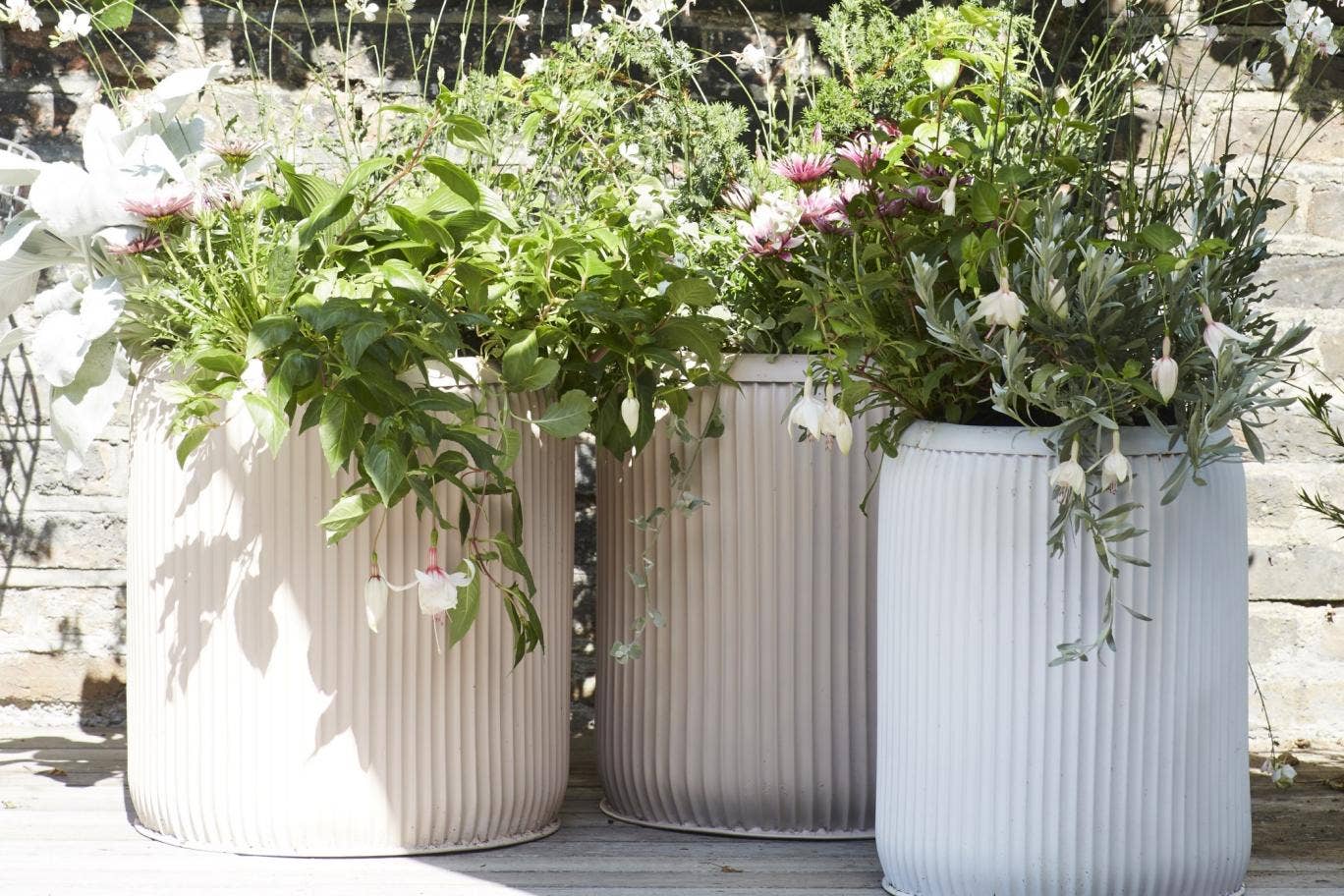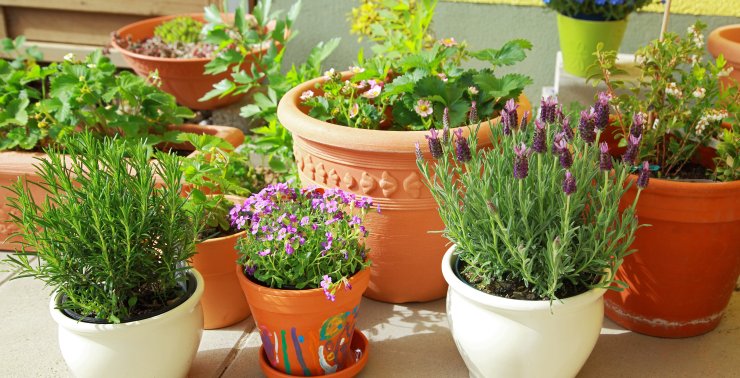Newly planted plants need deep watering to get their young roots going. This is why people look for alternatives to help them by fulfilling these requirements. These days, self watering plants are all the rage. These self watering pots are convenient because they intelligently irrigate your crops when and as needed, preserving water and giving you the freedom to continue with your daily chores without worrying about stunted growth or plants dying due to thirst. However, it would be best to be careful because of the potential problems with self watering pots, including breeding grounds for mosquitoes and causing root disease.
What Are Self Watering Planters?
A self water planter has two pots: an outer pot usually holds the water, and a second inner pot usually contains the potting mix. The wick joining the two compartments allows your plant’s roots to sip water from the reservoir as and when needed. Most contemporary water planters have a separate water reservoir.
How Do Self Watering Pots Work For Plants ?
The soil draws up water from the outer container (through the wick)- provided the reservoir is full- using the capillary system. Flooding is rarely a problem, with one or more holes helping drain excess water from the crop’s soil. This excess water subsequently collects underneath in the reservoir.
Other planters come with an overflow hose which ensures that the platform is never swamped. You cannot leave the container and the potting mix to dry out completely as the wick will not draw water causing the roots to wither and die. For a detailed step-by-step article on making a self watering planter, click here.
- Amazon’s Top Rated Self Watering Pots
- Self Watering Pots under $100
- Newest Arrivals Self Watering Pots
5 Problems With Self Watering Pots
- Potential Concentration of Toxic Minerals Salts – A significant challenge with self-watering planters is planting a higher concentration of mineral salts. This mainly occurs because water is continuously drawn from beneath and evaporated via the top, leaving dissolved minerals behind. These mineral salts buildup can eventually be harmful to your plants.
- They Can Be Rich Breeding grounds for mosquitoes – Drainage holes are essential in self watering pots. Unfortunately, they offer a perfect breeding nest for mosquitoes. Pesky mosquitoes will lay their eggs there, and when they hatch, mosquitoes will multiply because of the perpetually soggy conditions.
- Root rot – Some self-watering planters don’t have an overflow opening. Therefore, the water can flood the platform and deeply wet the soil. Eventually, your plant roots will rot, leading to stagnated growth or plant death. Another possible outcome is the growth of fungi, which will again interfere with your crops’ healthy development.
- Not All Plants Thrive in Self watering Planters – Some plants, including succulents and cacti -need to dry out between watering sessions thoroughly and will suffer if you make the mistake of cultivating them in these planters. For example, certain herbs lose their strong taste if grown in damp soil. On the same note, some flowers, such as nasturtiums, excel in more balanced environments and fail if Putin self-watering containers where the soil is always moist.
- Poor Root Growth – Naturally, plants like spreading out their roots and will push them in all directions- including toward the ground. Self-watering planters have water sitting underneath the pot, so when roots branch that way, they land in pure water. But they won’t grow there because of insufficient oxygen. This reduces your plant’s root mass, inhibiting healthy growth.
- Amazon’s Top Rated Self Watering Pots
- Self Watering Pots under $100
- Newest Arrivals Self Watering Pots
How To Solve Issues With Self Watering Pots?
Here are some practical ideas on overcoming some of the problems with self watering pots.
- Mosquito growth – Flush its water every few days to prevent mosquitoes from breeding in your planter. You can also plug the planter’s holes using a pot scrubber to prevent insects from flying in a while, still letting water flow out.
- Toxic Minerals Build Up – Your plant’s leaves (tips) will turn brown and dry if harmful salty buildup occurs. Removing the water reservoir and flushing the soil with tons of freshwater may help. You can also be going for a fresh potting mix each planting season. Also, avoid using liquid fertilizers, time-release fertilizers, or water with high salt content for these planters. If anything, compost is the most recommended fertilizer for crops in self-watering containers.
- Do Your Research – Do your research to avoid the frustrations of planting the wrong plants in your self watering pots.
- Root rot – You’ve to go for a self-watering planter with an overflow opening. You can also drill one. Using a more porous/airy soil also minimizes root rot.
- Amazon’s Top Rated Self Watering Pots
- Self Watering Pots under $100
- Newest Arrivals Self Watering Pots
How To Use Self Watering Pots?
Let’s dive into some of the expert tips when using self watering pots:
- If you have a large planter, try to reduce evaporation by covering the soil top with mulch.
- Planting using moisture-retentive soil mixes helps to decrease the frequency of refilling.
- Also, soil for growing in self-watering containers should be light, crispy, and well-drained to encourage excellent growth.
- Never leave self-watering containers out after a heavy frost. Otherwise, the water pot in the base may freeze and expand, making the chamber break.
And if you must store them outside during winter, ensure you first drain the base completely dry.
- The best self watering pots to use depend on the plant(s) you plan to grow.
Generally, you should pick the most significant container available since it will hold more soil, creating a more extensive root growing space and improved root growth.
- You can reduce moisture loss (from leaves) by using an umbrella to protect plants from punishing midday heat.
- Flowers, vegetables, and herbs have unique nutritional requirements, so use the recommended dry granular fertilizer for the crop you are growing. Also, use it as per the package directions.
There are many self watering pots in the market; you are spoilt for choice, so choose wisely.
Wrapping Up
Self watering planters drastically cut the amount of time you spend watering your crops and set you free to pursue your other chores. However, you could face potential problems with self watering pots such as poor root growth, toxic minerals buildup, and fungi. Some helpful remedies include using porous soil, flushing your potting mix with lots of water, and plugging the planter’s drainage holes with a pot scrubber. Others include thoroughly researching your plants and going for a planter with an overflow.
Our Curated Recommendations on Amazon:
- Amazon’s Top Rated Self Watering Pots
- Self Watering Pots under $100
- Newest Arrivals Self Watering Pots




